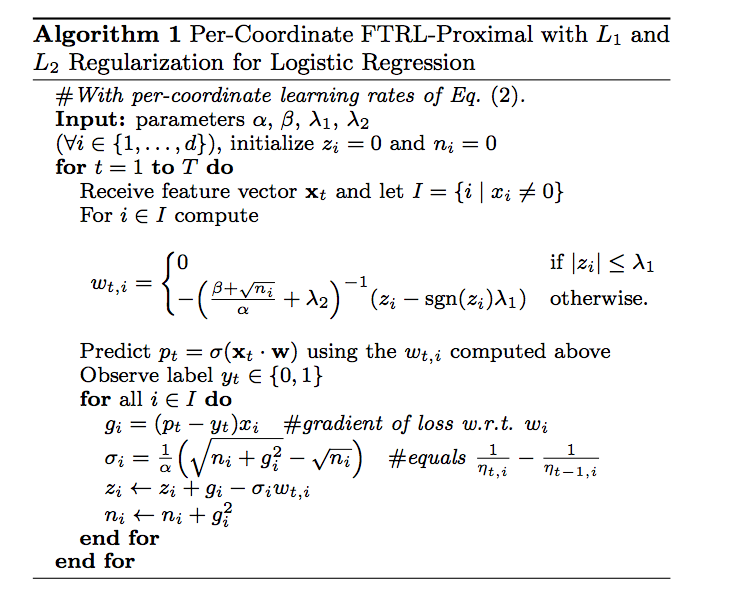NOW PART OF rsparse
R package which implements Follow the proximally-regularized leader algorithm. It allows to solve very large problems with stochastic gradient descend online learning. See Ad Click Prediction: a View from the Trenches for example.

- Online learning - can easily learn model in online fashion
- Fast (I would say very fast) - written in
Rcpp - Parallel, asyncronous. Benefit from multicore systems (if your compiler supports openmp) - Hogwild! style updates under the hood
- Only logistic regerssion implemented at the moment
- Core input format for matrix is CSR -
Matrix::RsparseMatrix. Hoewer common RMatrix::CpasrseMatrix( akadgCMatrix) will be converted automatically
- gaussian, poisson family
- vignette
- improve test coverage (but package battle tested on kaggle outbrain competition and contribute to our 13 place)
library(Matrix)
library(FTRL)
N_SMPL = 5e3
N_FEAT = 1e3
NNZ = N_SMPL * 30
set.seed(1)
i = sample(N_SMPL, NNZ, TRUE)
j = sample(N_FEAT, NNZ, TRUE)
y = sample(c(0, 1), N_SMPL, TRUE)
x = sample(c(-1, 1), NNZ, TRUE)
odd = seq(1, 99, 2)
x[i %in% which(y == 1) & j %in% odd] = 1
m = sparseMatrix(i = i, j = j, x = x, dims = c(N_SMPL, N_FEAT), giveCsparse = FALSE)
X = as(m, "RsparseMatrix")
ftrl = FTRL$new(alpha = 0.01, beta = 0.1, lambda = 20, l1_ratio = 1, dropout = 0)
ftrl$partial_fit(X, y, nthread = 1)
accuracy_1 = sum(ftrl$predict(X, nthread = 1) >= 0.5 & y) / length(y)
w = ftrl$coef()
ftrl$partial_fit(X, y, nthread = 1)
accuracy_2 = sum(ftrl$predict(X, nthread = 1) >= 0.5 & y) / length(y)
accuracy_2 > accuracy_1